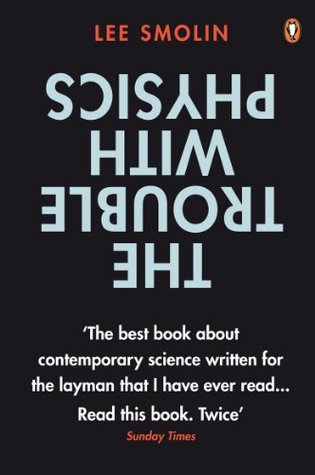More on this book
Community
Kindle Notes & Highlights
by
Lee Smolin
Read between
December 25 - December 26, 2018
I am a member of the first generation of physicists educated since the standard model of particle physics was established. When I meet old friends from college and graduate school, we sometimes ask each other, “What have we discovered that our generation can be proud of?” If we mean new fundamental discoveries, established by experiment and explained by theory—discoveries on the scale of those just mentioned—the answer, we have to admit, is “Nothing!”
Part of the reason string theory makes no new predictions is that it appears to come in an infinite number of versions. Even if we restrict ourselves to theories that agree with some basic observed facts about our universe, such as its vast size and the existence of the dark energy, we are left with as many as 10500 distinct string theories—that’s 1 with 500 zeros after it, more than all the atoms in the known universe. With such a vast number of theories, there is little hope that we can identify an outcome of an experiment that would not be encompassed by one of them. Thus, no matter what
...more
Brian Greene puts it in his latest book, The Fabric of the Cosmos: “Even today, more than three decades after its initial articulation, most string practitioners believe we still don’t have a comprehensive answer to the rudimentary question, What is string theory?… [M]ost researchers feel that our current formulation of string theory still lacks the kind of core principle we find at the heart of other major advances.”
The standard model of particle physics was the triumph of a particular way of doing science that came to dominate physics in the 1940s. This style is pragmatic and hard-nosed and favors virtuosity in calculating over reflection on hard conceptual problems. This is profoundly different from the way that Albert Einstein, Niels Bohr, Werner Heisenberg, Erwin Schrödinger, and the other early-twentieth-century revolutionaries did science. Their work arose from deep thought on the most basic questions surrounding space, time, and matter, and they saw what they did as part of a broader philosophical
...more
One problem that has bedeviled the theory from the beginning is the question of the relationship between reality and the formalism. Physicists have traditionally expected that science should give an account of reality as it would be in our absence. Physics should be more than a set of formulas that predict what we will observe in an experiment; it should give a picture of what reality is. We are accidental descendants of an ancient primate, who appeared only very recently in the history of the world. It cannot be that reality depends on our existence. Nor can the problem of no observers be
...more
For all its usefulness, the standard model has a big problem: It has a long list of adjustable constants. When we state the laws of the theory, we must specify the values of these constants. As far as we know, any values will do, because the theory is mathematically consistent no matter which values we put in. These constants specify the properties of the particles. Some tell us the masses of the quarks and the leptons, while others tell us the strengths of the forces. We have no idea why these numbers have the values they do; we simply determine them by experiments and then plug in the
...more
Faraday and Maxwell were themselves mechanists, and they devoted a lot of time and trouble to addressing this problem. They were not alone; young gentlemen made good careers at renowned institutions by inventing elaborate constructions of the microscopic gears, pulleys, and belts that they posited underlay Maxwell’s equations. Prizes were given for those who could solve the convoluted equations that resulted. There was one big and obvious manifestation of the problem, which is that light travels to us from the sun and stars, and outer space is empty of any matter. Were there any matter in
...more
1914, a Finnish physicist named Gunnar Nordström found that all you had to do to unify gravity with electromagnetism was increase the dimensions of space by one. He wrote the equations that describe electromagnetism in a world with four dimensions of space (and one of time), and out popped gravity. Just by the extra dimension of space, you got a unification of gravity with electromagnetism that was also perfectly consistent with Einstein’s special theory of relativity.
the principle of equivalence. It says that the effects of acceleration are indistinguishable from the effects of gravity.
A consequence of Maxwell’s theory of electromagnetism is that light rays move in straight lines. Thus it makes sense to use light rays when tracing the geometry of space. But if we adopt this idea, we see immediately that Einstein’s theory has great implications. For light rays are bent by gravitational fields, which, in turn, respond to the presence of matter. The only conclusion to draw is that the presence of matter affects the geometry of space.


